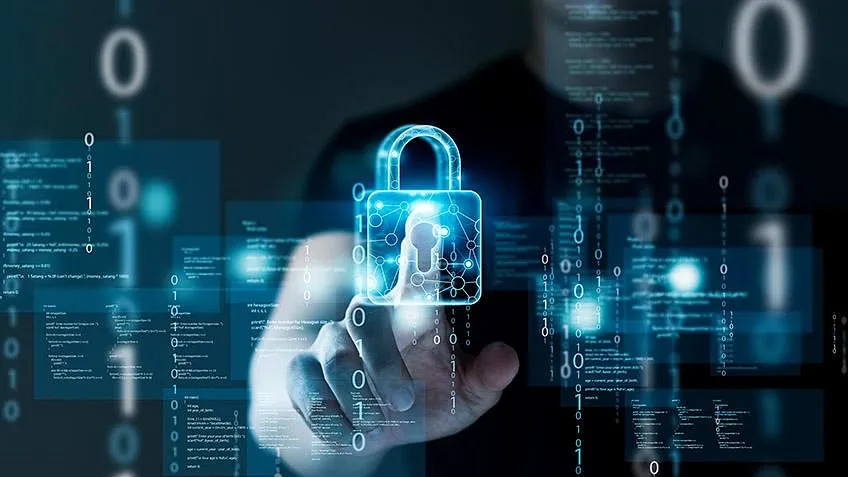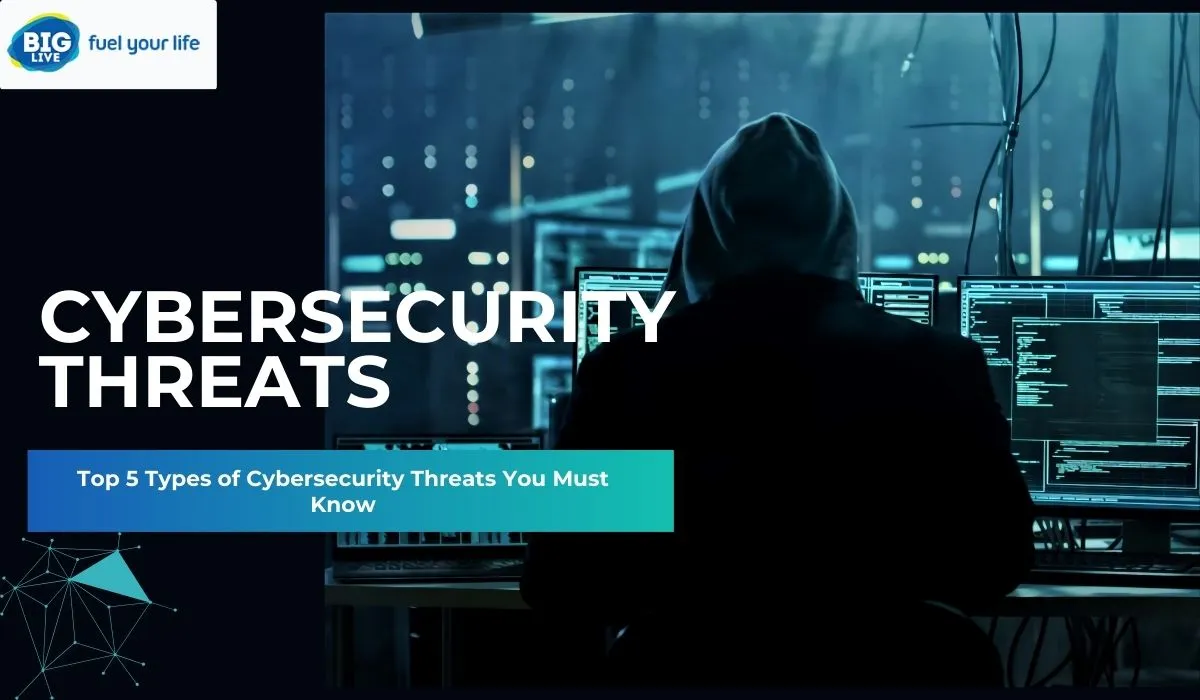Have you ever wondered what happens when hackers get really serious? As someone who's spent years following digital security news, I've seen some truly scary stuff! Today, I want to share with you the most dangerous cyber attacks in history that shook the world and changed how we think about internet safety. Think of these attacks like digital earthquakes – they caused massive damage, affected millions of people, and left lasting changes in their wake. From stolen money and secrets to shutting down important services we all rely on, these cyber attacks show just how vulnerable our connected world can be. Let's explore these digital disasters together in simple terms that anyone can understand!
Most Dangerous Cyber Attacks In History: When Hackers Caused Real-World Chaos
When we talk about the biggest cyber attacks in history, we're talking about digital events that jumped from computer screens into real life. These weren't just annoying computer problems – they affected hospitals, power grids, government systems, and even nuclear facilities! What makes these attacks so dangerous isn't just the computers they broke – it's how they disrupted people's lives, threatened safety, and sometimes even put lives at risk. Let's look at some of the scariest digital attacks ever.
The Wanna Cry Ransomware Attack: The Digital Epidemic
In May 2017, something terrible spread across the internet like wildfire. The Wanna Cry ransomware attack infected over 230,000 computers in more than 150 countries in just a few days! What made this attack so scary? Wanna Cry locked up people's computers and demanded money (in Bitcoin) to unlock them. But this wasn't just about personal computers. The attack hit:
- Hospitals in the UK, forcing doctors to cancel surgeries and send patients away
- Car factories that had to stop making cars
- Government computers in Russia, China, and many other countries
- Banks, schools, and businesses worldwide
I remember watching the news that week as the infection count kept climbing higher and higher. It was like watching a disease spread across the world map, except this disease attacked computers instead of people. What's really interesting is that Wanna Cry used a weakness that the US National Security Agency (NSA) had discovered but kept secret. When that secret got leaked, hackers used it to create one of the most famous cyber attacks in history.
Stuxnet: The Digital Weapon That Made History
If you're looking for the most sophisticated cyber attack ever, many experts point to Stuxnet. This wasn't your typical computer virus – it was a digital weapon created by government intelligence agencies (likely the US and Israel) to attack Iran's nuclear program. Discovered in 2010, Stuxnet did something no previous attack had done – it caused physical destruction to equipment by targeting industrial control systems. Here's what made it so incredible:
- It specifically targeted certain industrial equipment made by Siemens
- The virus made centrifuges in Iran's uranium enrichment facility spin out of control until they broke
- It did this while showing normal readings on monitoring systems, so operators had no idea anything was wrong until machines started breaking
- It spread using multiple methods, including USB drives, to reach computers not connected to the internet
I find Stuxnet fascinating because it crossed a line – from digital attacks that just affect information to attacks that destroy physical equipment. It showed the world that cyber attacks could cause real-world damage to critical infrastructure.
Not Petya: The $10 Billion Mistake
When we talk about the most destructive cyber attack in history in pure financial terms, Not Petya takes the crown. What started as an attack on Ukrainian companies in June 2017 quickly spread worldwide and caused around $10 billion in damages! Not Petya looked like ransomware (similar to Wanna Cry) but was actually something much worse – it permanently encrypted computers with no way to recover them, even if victims paid the ransom. It was designed to cause maximum destruction.
The attack hit:
- Shipping giant Maersk, disrupting global shipping for weeks
- Pharmaceutical company Merck, affecting medicine production
- Food company Mondelez (maker of Oreo cookies and many other foods)
- Many Ukrainian government agencies, banks, and power companies
I remember reading about how Maersk had to rebuild their entire IT infrastructure of 4,000 servers and 45,000 computers from scratch. Workers were passing handwritten notes because their email systems were completely destroyed!
Sony Pictures Hack: When North Korea Attacked Hollywood
In 2014, Sony Pictures was getting ready to release "The Interview," a comedy movie about assassinating North Korean leader Kim Jong-un. North Korea didn't find this funny at all and allegedly launched one of the most famous cyber attacks against a private company.
The hackers (believed to be working for North Korea) broke into Sony's networks and:
- Stole and leaked unreleased movies
- Released embarrassing private emails between executives
- Exposed personal information of employees
- Deleted important data from Sony's computers
- Threatened violence against theaters that showed the movie
I found this attack particularly interesting because it showed how cyber attacks can be used for censorship and intimidation. Sony eventually canceled the movie's theatrical release (though it was later released online), marking the first time a major studio film was canceled due to cyber threats.
How Hackers Break In: Methods Behind the Most Dangerous Cyber Attacks
Now that we've looked at some of the top cyber attacks in history, let's talk about how hackers actually get into systems. Understanding these methods can help us all stay safer online.
Phishing: The Digital Disguise
Many of the biggest cyber attacks in history started with something simple – a fake email. Phishing attacks trick people into:
- Clicking dangerous links
- Opening infected attachments
- Entering passwords on fake websites
- Installing malware that lets hackers in
I once received an email that looked exactly like it came from my bank. It had the right logo, colors, and even similar writing style. The only giveaway was the sender's email address, which wasn't quite right if you looked closely.
Software Vulnerabilities: The Unlocked Windows
Software has bugs and security holes – it's just a fact of life in the digital world. Hackers love finding these weaknesses before they're fixed. Some of the most damaging cyber attacks happened because:
- Companies didn't update their software quickly enough
- Developers made security mistakes in their code
- Some organizations were using very old, unsupported software
The Wanna Cry attack we talked about earlier spread so quickly because many computers hadn't installed a security update that Microsoft had released months earlier!
Password Problems: The Keys to the Kingdom
Weak passwords have led to many famous cyber breaches. Hackers can:
- Guess common passwords (like "password123" or "qwerty")
- Use computer programs to try millions of password combinations
- Reuse passwords stolen from other websites
I always tell my friends to use different passwords for important accounts. If hackers break into one website and steal your password, they'll try using that same password on your email, bank, and other accounts!
Famous Cyber Attacks In India: Digital Threats Go Global
While we've talked about worldwide attacks, let's look at some famous cyber attacks in India that show how no country is safe from digital threats.
The ATM Systems Hack of 2016
In 2016, India faced one of its biggest cyber security incidents when hackers stole information from 3.2 million debit cards. The attack affected customers from many major banks including:
- State Bank of India
- HDFC Bank
- ICICI Bank
- YES Bank
- Axis Bank
The attack started with malware installed on ATM systems that captured card details when people used the machines. Many people had money stolen from their accounts before banks caught the problem. I remember this attack caused a lot of worry in India, with many people rushing to change their PINs and check their bank statements for strange transactions.
The 2020 Power Grid Attempt
In 2020, security researchers discovered evidence that hackers (possibly connected to China) had targeted India's power grid during a time of border tensions. While major damage was prevented, this attack showed how cyber warfare increasingly targets critical infrastructure.
This type of attack is especially concerning because it could potentially:
- Cause widespread power outages
- Disrupt emergency services
- Affect hospitals and water systems
- Create public panic and confusion
Indian Healthcare System Attacks During COVID-19
During the COVID-19 pandemic, hackers targeted Indian healthcare systems and vaccine research, showing how cyber criminals take advantage of crises. These attacks tried to:
- Steal vaccine research data
- Access patient information
- Disrupt hospital systems during a critical time
I found these attacks particularly upsetting because they targeted healthcare during a global emergency when these systems were already under tremendous pressure.
The Biggest Cyber Attack in History: Different Ways to Measure "Biggest"
When we talk about the biggest cyber attack in history, we could mean different things:
Most Computers Affected: Conficker Worm
The Conficker worm infected up to 15 million computers worldwide after it appeared in 2008. It created a massive "botnet" (network of infected computers) that could have been used for enormous attacks, though its full potential was never realized thanks to security researchers.
Most Money Stolen: The Bangladesh Bank Heist
In 2016, hackers broke into Bangladesh's central bank and almost stole $1 billion! They managed to transfer $101 million before being stopped, with only about $38 million ever recovered. The hackers used the SWIFT banking network (which banks use to transfer money internationally) and would have gotten away with much more if not for a spelling error that raised suspicions! I find this attack fascinating because it showed how even the most secure financial systems can be vulnerable. The hackers were patient, struck during a weekend, and understood the banking system deeply.
Longest-Running Attack: Operation Shady RAT
Discovered in 2011, Operation Shady RAT had been silently stealing information from governments, companies, and organizations for up to 5 years! The attack targeted:
- Olympic committees
- Defense contractors
- Construction companies
- Technology companies
- Government agencies in the US, Taiwan, India, South Korea, and others
What makes this one of the top cyber attacks in history is how long it went undetected, quietly stealing sensitive information for years.
Why These Attacks Matter: Lessons from Digital Disasters
Looking at these most dangerous cyber attacks in history, what can we learn?
Critical Infrastructure Is Vulnerable
Many of the worst cyber attacks targeted things we all depend on:
- Power grids
- Hospitals
- Transportation systems
- Water treatment facilities
I worry about this because an attack on these systems affects everyone, not just computer users. When a hospital gets hit by ransomware, patients suffer. When power grids are attacked, entire cities can go dark.
Small Mistakes Can Cause Huge Problems
Many major attacks succeeded because of simple human error:
- Someone clicked a suspicious link
- A system wasn't updated
- A password was too simple
- Security warnings were ignored
I've made some of these mistakes myself! Once I almost clicked on a fake Netflix email before noticing it wasn't quite right. These small moments can have huge consequences.
Cyber Attacks Are Becoming Weapons
The line between cyber crime and cyber warfare is getting blurry. Countries now use cyber attacks to:
- Spy on each other
- Damage important infrastructure
- Influence elections
- Test their offensive capabilities
This trend worries many security experts because it means the digital world is becoming another battlefield for international conflicts.
How to Protect Yourself: Simple Steps for Digital Safety
After learning about these dangerous cyber attacks, you might be wondering how to stay safe. Here are some simple tips:
Keep Everything Updated
Many attacks use known security holes that have already been fixed in updates. Always:
- Update your phone and computer when prompted
- Update apps and browsers regularly
- Replace very old devices that no longer get security updates
I set my devices to update automatically overnight so I don't have to remember to do it.
Use Strong, Unique Passwords
Good passwords are your first line of defense:
- Make them long (at least 12 characters)
- Use a mix of letters, numbers, and symbols
- Don't use the same password for important accounts
- Consider using a password manager to keep track of them all
Be Careful What You Click
Many attacks start with a click:
- Don't open attachments you weren't expecting
- Hover over links to see where they really go before clicking
- Be suspicious of urgent messages asking for personal information
- When in doubt, contact the company directly through their official website (not through the email)
I almost got tricked once by an "urgent account problem" email, but when I called my bank directly, they confirmed it was fake.
Use Two-Factor Authentication
Two-factor authentication (2FA) adds an extra security step beyond your password. Even if someone gets your password, they still can't get into your account without the second factor (usually a code sent to your phone). I use 2FA for my email, social media, and financial accounts – anywhere that has important personal information.
The Future of Cyber Threats: What's Coming Next?
As we look at the history of major cyber attacks, what might the future hold?
AI-Powered Attacks
Artificial intelligence is making cyber attacks smarter:
- AI can write convincing phishing emails without spelling mistakes
- It can learn how to bypass security systems
- It might find new security weaknesses faster than humans
I find this development concerning because it could make attacks harder to spot and defend against.
Internet of Things (IoT) Vulnerabilities
With more devices connected to the internet (like smart fridges, thermostats, and toys), there are more targets for hackers:
- Many IoT devices have poor security
- They often don't get regular security updates
- When compromised, they can be used to attack other systems
I'm careful about which smart devices I bring into my home, checking their security features and update policies first.
Ransomware Becomes More Targeted
Rather than attacking everyone, ransomware is becoming more focused on high-value targets:
- Hospitals that need immediate access to patient data
- Cities and government agencies providing essential services
- Companies that can't afford downtime
- Organizations with sensitive data worth protecting
These targeted attacks often demand much higher ransom payments because they focus on victims who have both the money and urgent need to pay.
Conclusion: Staying Safe in a Digital World
Looking back at the most dangerous cyber attacks in history, one thing is clear – our digital world faces real threats that affect real people. From the massive spread of WannaCry to the physical damage caused by Stuxnet, these attacks show both the creativity of attackers and the vulnerability of our systems. But there's good news too! By understanding these attacks and taking simple protective steps, we can all make ourselves safer online. Digital security isn't just for experts – it's something everyone can and should practice.
I hope this journey through the biggest cyber attacks in history has been interesting and helpful. The digital world is wonderful but requires care and attention to navigate safely. By staying informed, cautious, and proactive, we can enjoy all the benefits of our connected world while minimizing the risks. What cyber security steps will you take today to protect yourself and your information? Small actions can make a big difference in keeping you safe from becoming part of the next big cyber attack story!














